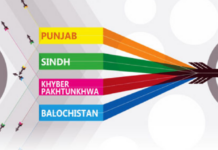Pakistan is set to brief the International Monetary Fund (IMF) on May 15-16, 2025, regarding key developments in the country’s power sector, including progress on circular debt management, the annual tariff rebasing outlook, and the implementation of new carbon levy legislation, according to a news report.
This follows a series of new commitments made by the government aimed at restructuring the energy sector, encompassing both electricity and gas.
The government has promised to regularly raise tariffs in line with cost recovery needs, transfer the circular debt to the Central Power Purchasing Agency (CPPA-G), and eliminate new subsidies for electricity and gas. It also assured the IMF that any subsidy on energy will be harmonized with the Benazir Income Support Programme (BISP) to ensure that it reaches only deserving consumers.
Additionally, the government has agreed to collaborate with the IMF and World Bank to identify and verify the target beneficiaries of the new subsidy framework. The timeline for the implementation includes setting eligibility criteria by July 2026, establishing a rebate mechanism with financial institutions by mid-2026, and launching a public communications campaign by June 2025.
The Pakistan government’s Circular Debt Management Plan (CDMP) includes several measures to reduce the current Rs2.4 trillion debt (2.1% of GDP). This will be achieved by renegotiating arrears with Independent Power Producers (IPPs) and converting existing debt to CPPA debt.
The plan involves borrowing from banks to repay loans, with annual payments to be financed through the Debt Service Surcharge (DSS) over the next six years. In addition, the government will remove the current 10% cap on DSS revenues by June 2025, to ensure sufficient funding for these payments.
Furthermore, the government is preparing a plan to reduce interest-bearing circular debt by the end of FY25, with a target of lowering the debt stock to no more than Rs337 billion. The longer-term goal is to reduce the circular debt to zero by FY31.
The Power Division will also present an update on the development of Electric Vehicle (EV) charging stations by February 2027, including a new Viability Gap Funding (VGF) framework to incentivize private sector investment in EV infrastructure.
Meanwhile, the Finance Ministry has stated that allocations for power sector subsidies in the 2025-26 budget will be based on fiscal space availability, with decisions made through consultation with the Finance Division. The final budgetary allocations will be determined in line with the country’s fiscal constraints.























